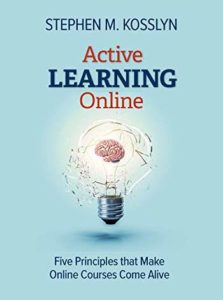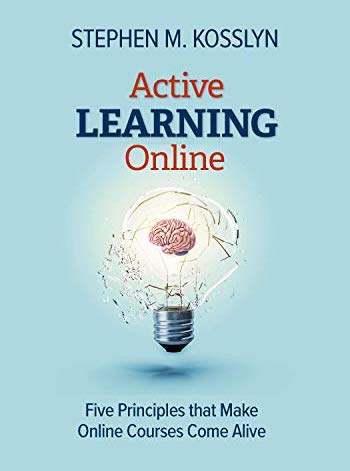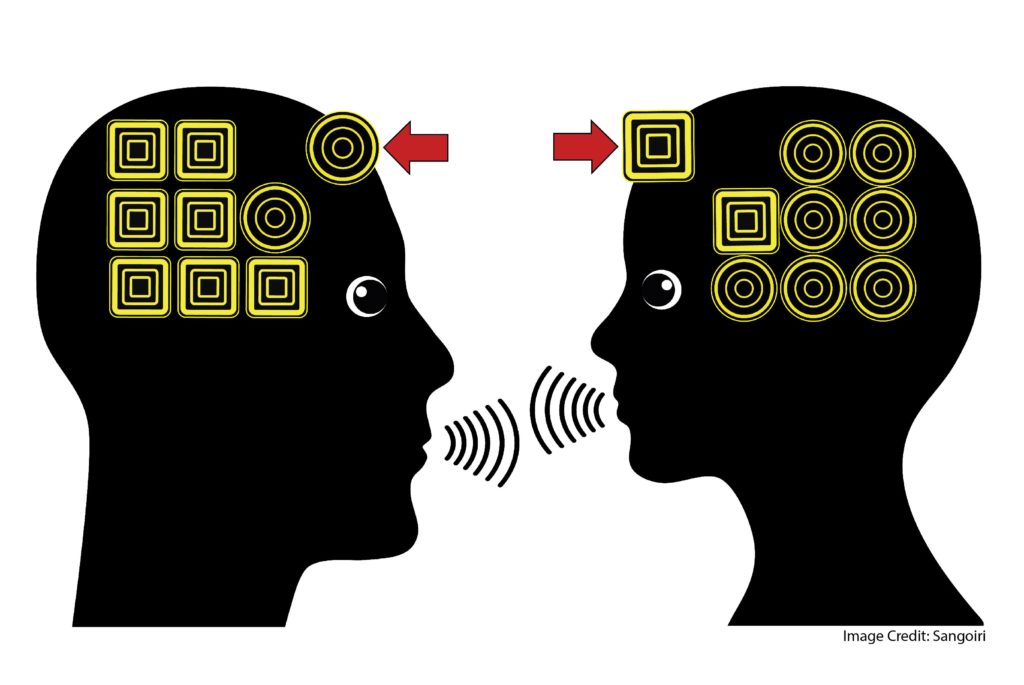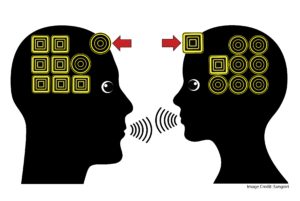The COVID-19 global pandemic has spurred a massive and rapid increase in online education. Although it is possible to design effective learning experiences in online classrooms, often online education fails t
Learning, according to Kosslyn, is the process of acquiring and encoding new skills and information in memory. Ideally learned material can be transferred and applied in novel ways. Active learning, or using information in service of achieving a learning outcome, is typically more effective than lectures for helping students to retain and apply information, even if it does not feel to students like they are learning during active learning exercises. Although lectures allow students to passively participate and cannot be tailored to students’ interests and background knowledge, in small doses they can be an effective teaching instrument because they highlight and organize key ideas for students, model expert thinking, and can be used to reach many students at once. Kosslyn advocates for the “learning sandwich,” which features a brief lecture-based explanation of an idea, followed by an active learning exercise, and then a class-wide debrief on the learning exercise.
To support students’ learning it is helpful to understand a few key aspects of how human learning and memory work. One key principle is that the more mental effort one exerts on understanding or manipulating a piece of information the more likely that piece of information is to be retained. Similarly, linking new information or ideas to existing knowledge aids learning. Pushing students just slightly beyond their current skills and knowledge can create a fertile environment for them to engage in this sort of deep processing and association building. Another key principle is that it is easier to learn content that has been organized into a few small units. Educators might organize lectures into three or four distinct chunks and pause between chunks or build in active exercises between chunks to aid learning. Presenting information in both verbal and visual forms aids learning. Educators often rely on verbal information deliver (e.g., through lectures and texts); maps, charts, graphs, and diagrams can be used to engage with information visually. Specific, timely, and actionable feedback, coupled with a learner’s motivation to improve, can help learners make significant gains. Kosslyn suggests several classic memory tricks that draw on and integrate these principles of how people learn. For example, he describes the method of loci in which one draws on known visual images to learn lists or sequences.
For students to learn they need to be motivated to participate in the learning experience. Kosslyn reviews basics of theories of motivation. An intrinsic desire or inherent interest in learning stems from an individual’s basic desire to feel competent, autonomous, and socially connected to other people. Extrinsic motivation involves offering incentives or threatening consequences. Kosslyn offers examples of ways to capitalize on these sources of motivation. He concludes with several examples of exercises and activities that can be incorporated into online classes, whether those classes are synchronous or asynchronous, and explains how to set up the relevant technology for these activities. Active learning exercises can include analyzing and evaluating various materials, engaging in perspective taking via debates, role playing and storytelling, solving problems, finding information, making predictions, and explaining ideas.
Online learning has really come of age in the last year. Educators can equip themselves to be able to teach effectively online with the advice in Active Learning Online.
Kosslyn, S. M. (2020). Active Learning Online: Five Principles that Make Online courses Come Alive. Alinea Learning; Boston, MA.





